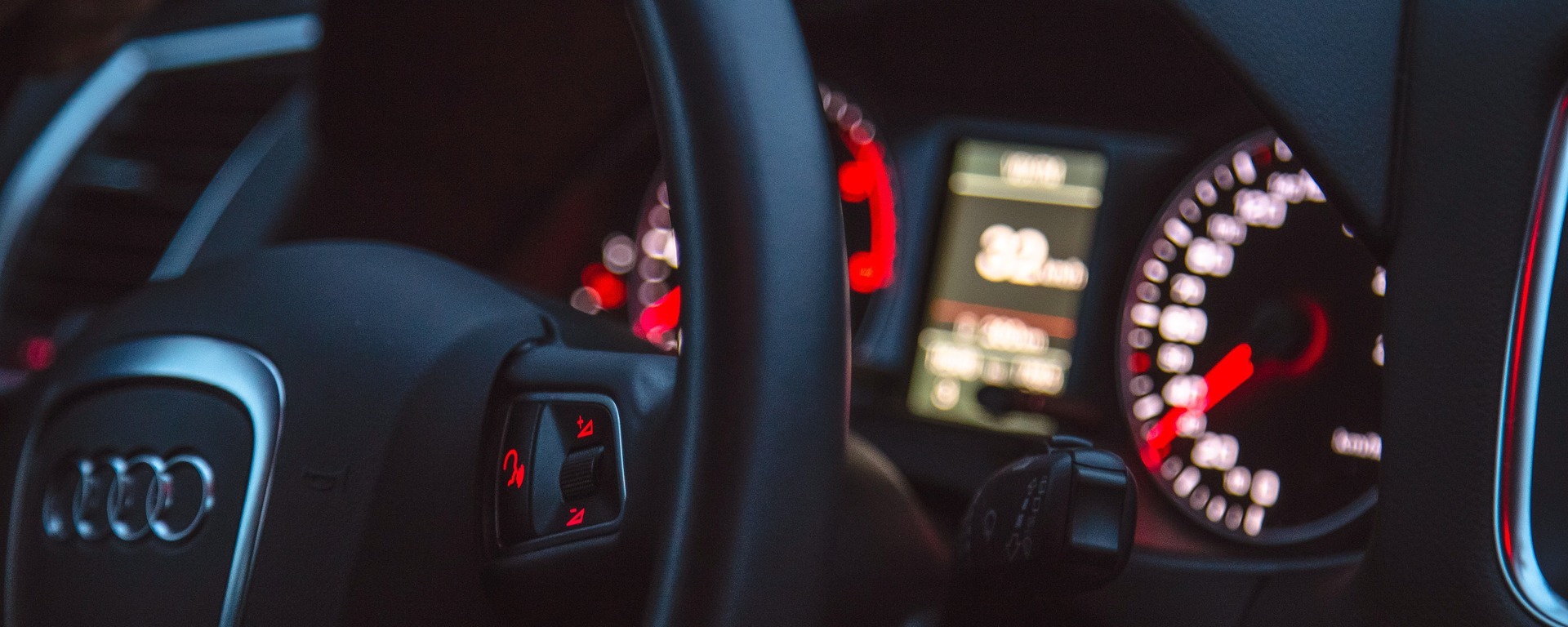Steering - Learning to Drive
Posted on 13th February 2024 at 08:10
Whether you're a novice driver gearing up for your driving test or an experienced motorist looking to refine your steering skills, this guide offers comprehensive insights into steering lock, power-assisted steering, and even the dos and don'ts of steering, ensuring you're well-equipped to tackle the roads with assurance and agility.
The Steering Wheel:
Function of the Steering Wheel:
The steering wheel is the primary interface between the driver and the vehicle's direction, enabling the driver to navigate and control the car with precision. It operates through a linkage system, directing the vehicle via the front wheels, and is essential for manoeuvring and ensuring safe travel.
How to Use the Steering Wheel:
Proper hand positioning on the steering wheel is critical for effective control and safety. The recommended positions have evolved from the traditional "10 and 2" to the more modern "9 and 3" placement on the clock face of the wheel. This adjustment offers enhanced control and minimizes the risk of injury in case of airbag deployment. A relaxed grip, with thumbs resting outside the steering wheel spokes and palms facing down, ensures stability and precise manoeuvring.
Steering Lock:
When the wheels are fully turned to their maximum in either direction, this is referred to as full lock. It's crucial for executing sharp turns but should be used judiciously to avoid strain on the steering system.
Do you signal when moving off?
Yes, if moving off could affect other road users, signalling is necessary to indicate your intention. This is especially important when moving off from behind a parked car, where visibility might be limited for both you and other road users.
Turning the Steering Wheel:
Turning Left or Right
Whether turning left or right, the key is to use smooth and controlled movements. The hand-over-hand technique or the push-pull method are effective for making turns, ensuring that hands do not cross over the steering wheel in a manner that could compromise control or safety.
To Straighten Up After the Turn
After completing a turn, allow the steering wheel to naturally return to the central position, ensuring the vehicle aligns correctly with the road. This automatic correction helps maintain stability and direction.
Oversteer and Understeer:
Oversteer occurs when the rear of the car slides outwards due to excessive speed or sharp steering, while understeer is when the car fails to turn as sharply as intended, often a result of entering a turn too fast. Both situations require skillful steering adjustment to regain control.
Power-assisted Steering (PAS):
PAS facilitates easier steering, particularly at low speeds, by reducing the physical effort required to turn the steering wheel. It's a standard feature in modern vehicles, enhancing manoeuvrability and comfort.
Dry Steering:
Dry steering involves turning the steering wheel while the vehicle is stationary. Although it's sometimes necessary, it can cause unnecessary wear on the tyres and steering components.
Steering FAQs:
Can you fail a driving test for steering?
Yes, improper steering control, such as oversteering, understeering, or incorrect hand positioning, can lead to failure in a driving test as these indicate a lack of vehicle control.
How do you steer when learning to drive?
When learning to drive, adopting the correct steering techniques, such as the push-pull method or hand-over-hand technique, is essential for effective vehicle control.
What are the rules for steering a car?
The rules for steering a car include maintaining both hands on the wheel in the recommended positions, using appropriate steering techniques for turns, and avoiding distractions that could impair control.
Can I cross my hands when steering on my driving test?
Crossing your hands when steering during a driving test used to be discouraged under traditional driving instruction, primarily due to concerns about control and safety. However, the approach to this has evolved with driving practices and the design of modern vehicles.
Nowadays, the emphasis is on maintaining control of the vehicle and ensuring safe driving techniques. If crossing your hands is part of a controlled steering method that doesn't compromise safety or control—such as the hand-over-hand technique—it is generally acceptable.
What should you not do when steering?
When steering, avoid gripping the wheel too tightly, placing thumbs inside the wheel spokes, dry steering unnecessarily, and allowing the wheel to spin freely without control.
How can I improve my steering skills?
Improving steering skills involves practice, focusing on smooth and controlled movements, understanding vehicle response to steering inputs, and familiarizing yourself with different steering techniques.
What are the 2 correct steering methods?
The two correct steering methods are the hand-over-hand technique and the push-pull method, both ensuring efficient and safe vehicle manoeuvring.
What is pull-push steering?
Pull-push steering is a method where the driver alternates hands to push the wheel up and pull it down, avoiding crossing arms over the steering wheel, which facilitates smooth and controlled turns.
Do you steer where you look?
Yes, steering where you look is a fundamental principle of driving, as your hands naturally follow your eyes, ensuring that the vehicle goes in the intended direction.
What is the best hand position for driving?
The best hand position for driving is now considered to be "9 and 3" on the steering wheel, offering optimal control and reducing the risk of injury from airbag deployment.
Mastering steering is a cornerstone of safe and competent driving. By understanding and applying the correct techniques, drivers can ensure not only their safety but also that of other road users.
For more help and support, join our online theory test course today to get ready for success.




Share this post:




